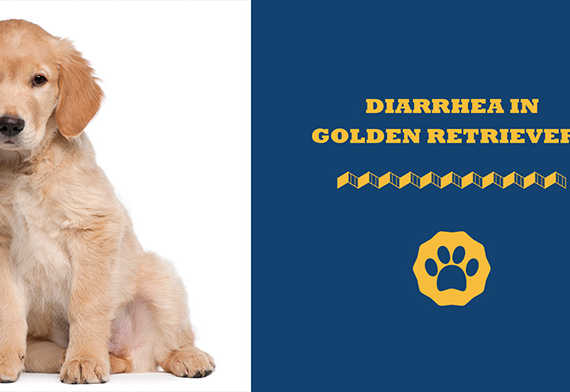Updated: August 10th, 2022
 © Brodetskaya Elena / Adobe Stock
© Brodetskaya Elena / Adobe Stock
For many people, the word ‘microchip’ will bring to mind images of computers and other tech items, but this tiny little invention can also be the saving grace for many dog owners.
It’s becoming more and more common today for pet owners to opt to have a small microchip inserted into their pet, so if they ever go missing, you’re much more likely to be able to track them down. It’s amazing to think that a microchip roughly the same size as a grain of rice can hold important information about your much loved pet!
What is a Microchip?
A microchip is a tiny piece of equipment that’s made up of a glass cylinder containing a very small chip. If you decide to microchip your dog, they’ll be issued with an identification number which will be transmitted by this chip if an identification scanner is passed over or near the area where the chip is inserted.
No battery needs to be inserted along with the microchip, because it only ever needs to transmit the number when activated by a scanner.
Depending on who you speak to, you may also hear the term ‘transponder’ used, which is another word for the microchip.
How are Microchips Implanted?
Although the idea of having a microchip implanted may sound daunting, it’s actually a very simple procedure and isn’t painful or distressing for most pets.
To insert the microchip, your vet or other qualified professional will pinch the skin between the shoulder blades of the dog and using a needle, and insert the chip. This is not painful, and most dogs are not bothered by this at all – it’s only likely to cause your dog any distress if you have an especially nervous dog, who may be concerned about a visit to the vet in general.
If you’re still worried about the process hurting your dog, you can watch lots of different clips online that show you how quick and easy this process is to help put your mind at rest. If you do have a nervous dog, you should remember to try and stay calm, and gently stroke and reassure them to show them there’s nothing to be worried about.
What are the Benefits of Microchipping?
Microchipping dogs is the most permanent and secure means to ensure they can be identified if they are ever parted from you. While tags and similar identification methods are still a great idea, microchips can’t be easily removed by other people, or get easily lost if your Labrador decides to go for a swim or dig.
Although it’s rare, sadly dogs do wander off either from their home, or during a walk. If something like this ever happened to your dog, you can be confident in the knowledge that around 3 out of 4 missing dogs are reunited with their owners because of the information on their microchip.
Although there’s never a 100% success rate with reunions, even with microchipping, knowing you’ve done everything to keep your dog safe will make a stressful situation easier to cope with.
In some documented cases, owners have been found for dogs that have gone missing during natural disasters, sometimes even years after the event, because of the details held on the chip.
What is the Cost of Microchipping?
There is no set price for this procedure, however, it’s not very expensive – coming in at between $25-$50 on average, depending on your vet. In many cases, your appointment may be with a qualified vetinary nurse, and won’t need any routine follow up appointments…so there is no ongoing cost.
Make Sure You Keep it up to Date
If you have your dog microchipped and then move house or change your phone number, it’s really important you contact the company holding the information on your microchip. It may seem like common sense, but if your details aren’t up to date, they won’t be able to get hold of you if your dog does go missing!
The microchipping company is likely to be separate to your vet, but you should be able to easily find the contact details online if you aren’t the one to have your dog’s microchip inserted. A small fee may be charged to update your details(not normally more than around $30), but given how long people usually stay in one place and keep the same contact numbers, this is a small price to pay for the added security you are giving your Labrador.
It’s important to remember you’ll also need to contact the microchipping company if your pet changes owners, for example if someone takes over the care of your dog for you, or if you adopt a dog from another family.
If you adopt a dog from a charity, ask them to scan them first to see if they’re already chipped. If they are, you’ll need to make sure the details are changed as soon as you get the dog’s chip number from whoever has scanned them for you.
Do I Need to Buy a Scanner if I Get My Dog Microchipped?
No – there is absolutely no need to buy a scanner, as you’ll have no need to scan your dog. If you’re ever concerned the microchip may have moved, you can just pop to your vet and ask them to do a quick scan for you…this will only take a few seconds, and will save you the added cost of getting hold of a scanner you’ll hardly ever use.
If you’re a dog walker, or have a job that involves working with lots of dogs, and being in areas where dogs may get lost (like a dog park), then you may want to look at investing in a scanner for your peace of mind. However, even in these situations, it still isn’t particularly ‘necessary’ to own a scanner because your local vet can easily scan any dog you may become concerned about.
Are There Any Risks Involved in Microchipping?
The risks of implanting a microchip in a dog is absolutely tiny, and unless there are special circumstances surrounding your dog’s health, your vet is likely to say the benefits hugely outweigh any level of risk.
In some cases, the microchip can move slightly, which can make it harder to detect, and it’s worth heading back to the vet if you think this may have happened. Other risks are slight swelling around the injection sight, infection at the injection site, or failure of the microchip.
Your vet will normally check the microchip works with the scanner both before and after insertion, so the likelihood of it not transmitting after being injected is very slim.
Should I Still Use a Dog Tag and Collar?
YES! If your dog goes missing, and is found with no tags or collar, you need to hope the person who finds them is willing to make a few calls and wait while your dog is collected by an animal control officer who can then take them to be scanned.
For the most part, dogs get lost because they wander out of an open door, so they’re most likely to bump into somebody in your neighborhood who isn’t likely to own a scanner.
In this instance, a much quicker way for your dog to be reunited with you, is if someone finds them and can immediately access a contact number to be able to give you a ring and let you know where to come and collect your precious pet.
What Does the Law Say?
From April 2016, it became the law to microchip every dog in the UK over 8 weeks of ages. Failure to comply with this law, results in a fine of £500 (around $700). There are currently no laws of this kind in place in the US, but many charities and owners are questioning whether this is something that should be pushed for.
Regardless of the lack of laws around the subject in the US, it’s still a very good idea to get your dog microchipped…and that way, if the law does change, you’ll already be 1 step ahead of the game.



